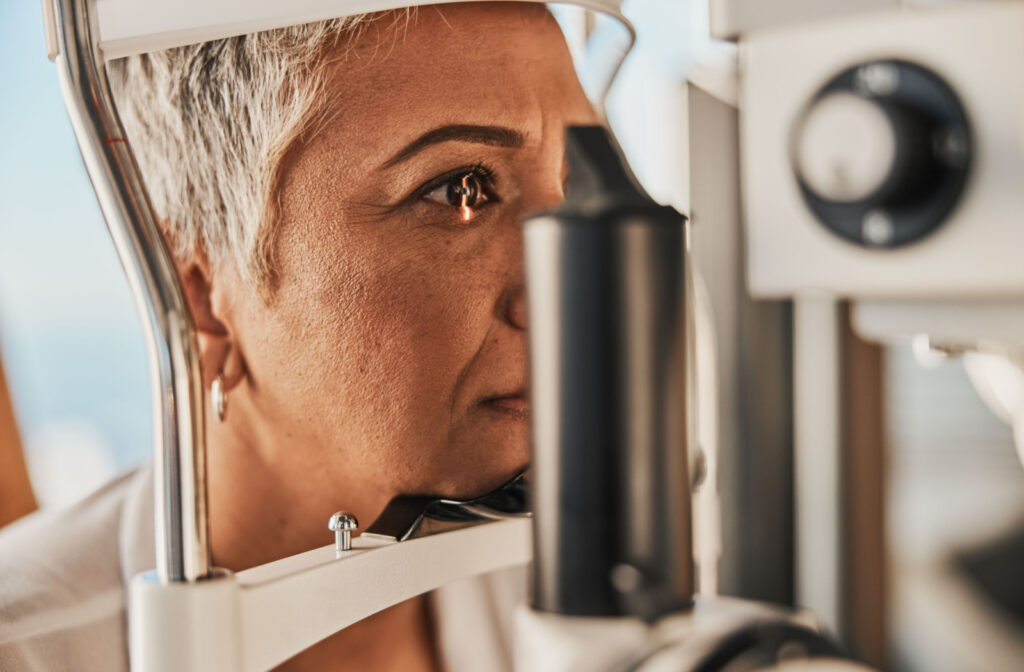What Are the Early Signs of Cataracts?
Cataracts, a common eye condition often related to aging, are characterized by clouding of the normally clear lens of the eye, subsequently affecting vision.
Early signs of cataracts include:
- Blurred or hazy vision
- Sensitivity to light
- Fading colors
- Difficulty with night vision.
Recognizing serious symptoms quickly is crucial, as early detection and intervention through eye exams can help preserve vision and improve quality of life for those affected by eye conditions like cataracts.
What Are Cataracts?
Cataracts are a condition where the lens inside the eye, which is normally clear, becomes cloudy or opaque. This cloudiness obstructs the passage of light through the lens, causing noticeable effects on vision.
Your eye’s lens is made mostly of fluid and protein, and cataracts form when proteins clump together, clouding a small area of the lens. Over time, this clouding can become denser and cover a larger portion of the lens.
What Are the Risk Factors for Cataracts?
Cataracts are commonly associated with aging. However, other factors, such as prolonged exposure to ultraviolet sunlight, certain diseases (like diabetes), smoking, and excessive consumption of alcohol can also contribute to the development of cataracts.
In some cases, cataracts can be present at birth or develop as a result of eye injuries. Long-term use of corticosteroid medications is also recognized as a potential risk factor.
Early Signs of Cataracts
Cataracts often develop slowly and might not significantly affect your vision early on. But with time and progression, you may notice the following cataract symptoms:
- Blurry or cloudy vision: This is often the first noticeable symptom. You may feel like you’re looking through a frosty or fogged-up window. Changes to your vision can be particularly noticeable at night or in low-light conditions.
- Difficulty seeing clearly, even with prescription glasses or contact lenses: Even with your correct prescription, you may find it hard to read or perform other routine tasks without ample light.
- Increased sensitivity to glare and bright lights: You may experience discomfort or find it difficult to see in bright light. Halos around lights, especially at night, may make driving more difficult.
- Fading or yellowing of colors: Cataracts can cause a general dulling of colors, making them appear less vibrant. Whites may begin to look yellowish.
- Double vision in one eye: In the early stages of a cataract, your lens may become cloudy in only a small area, causing you to see double or multiple images.
- Frequent changes in eyeglass prescription: If your prescription for glasses or contact lenses is frequently changing, it may be due to a developing cataract. Routine eye exams are crucial for detecting these changes and managing them effectively.
If you notice any of these changes in your vision, consult an eye doctor for a comprehensive eye examination. Early detection and treatment can help to preserve your vision and quality of life.
Importance of Recognizing Early Signs
Recognizing the early signs of cataracts is of paramount importance. Early detection is crucial for preventing further vision loss, as timely treatment can stop the progression and restore your sight.
Untreated cataracts can have a profound impact on daily activities, making it difficult to read, drive, or even see the faces of loved ones clearly. The world can become less vibrant and more challenging to navigate, significantly affecting the quality of life.
If you notice any changes in your vision, such as increased sensitivity to light or frequent changes in your eyeglass prescription, do not delay in seeking advice from an eye doctor.
A comprehensive eye exam helps diagnose cataracts so we can initiate appropriate treatment. Remember, your vision is a valuable asset, and taking proactive steps toward its preservation is vital.

Diagnosis & Treatment Options
Cataracts are typically diagnosed through comprehensive eye examinations conducted by a qualified optometrist. The examination may include a visual acuity test, which assesses your ability to see at various distances, and a dilated eye exam, where drops are placed into your eyes to widen your pupils, enabling an optometrist to examine your retina and optic nerve.
Once diagnosed, the treatment plan for cataracts may involve several options depending on the severity of your cataracts and their effects on your daily life. Initially, stronger lighting and eyeglasses may help improve vision. However, if impaired vision continues to interfere with your everyday activities, surgery may be recommended.
Cataract surgery involves removing the cloudy lens and replacing it with a clear artificial lens. It’s worth noting that cataract surgery is generally a safe and effective procedure.
At Griffin Optometric Group, our team is committed to providing exceptional eye care. We combine advanced technology with a personal approach to deliver accurate diagnoses and tailored treatment plans for our patients.
With a comprehensive eye exam at our clinic, we’ll embark on a journey toward clear vision together. Book an appointment today to get started.



